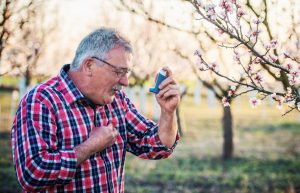
Am I a Good Candidate for Bronchial Thermoplasty?
If you suffer from asthma that is affecting your quality of life and you have tried other treatments that have not worked, you may be a good candidate for bronchial thermoplasty. The treatment is safe for most adults with asthma who do not smoke. For the treatment to be effective and safe, you must not have smoked or vaped for at least 12 months. Bronchial thermoplasty is also not recommended for people who have devices like pacemakers or internal defibrillators.
What Are the Side Effects of Bronchial Thermoplasty?
After the procedure, you may experience some coughing and wheezing. This is normal and should go away within a few days. Only rarely do these side effects result in the need for additional medical care.
Preparing for Your Bronchial Thermoplasty
A bronchial thermoplasty is a treatment that requires three separate sessions to treat different parts of your airway. Prior to the scheduled procedure, your physician will instruct you to stop taking NSAIDs (pain and anti-inflammatory medications like Ibuprofen). If you are unable to stop taking those medications or have a bleeding disorder, your treatment may need to be postponed. They will make sure you are not allergic to the lidocaine and other numbing agents used during the procedure. If for some reason you get a cold, bronchitis, or other infection, you must notify your doctor so the treatment can be rescheduled.
To prepare for the each bronchial thermoplasty session, you will be given an oral steroid as well as intravenous medication to sedate you for the procedure. The physician may also use a spray or topical treatment to numb your throat. After the procedure, you may need someone to drive you home.
If you are suffering from difficult to control asthma, please contact our office to schedule an evaluation so Dr. Bowen can determine whether the Bronchial Thermoplasty procedure is right for you.

